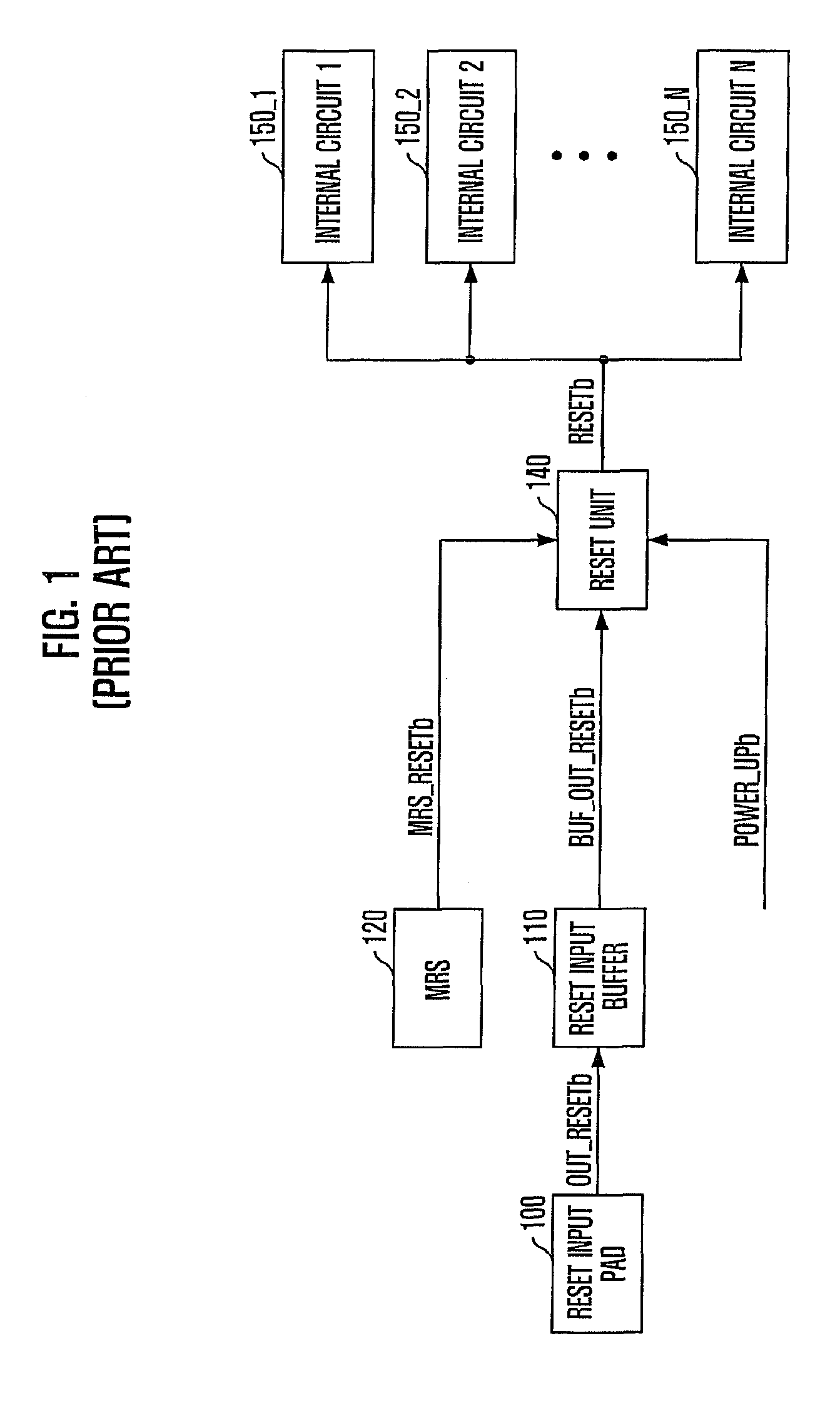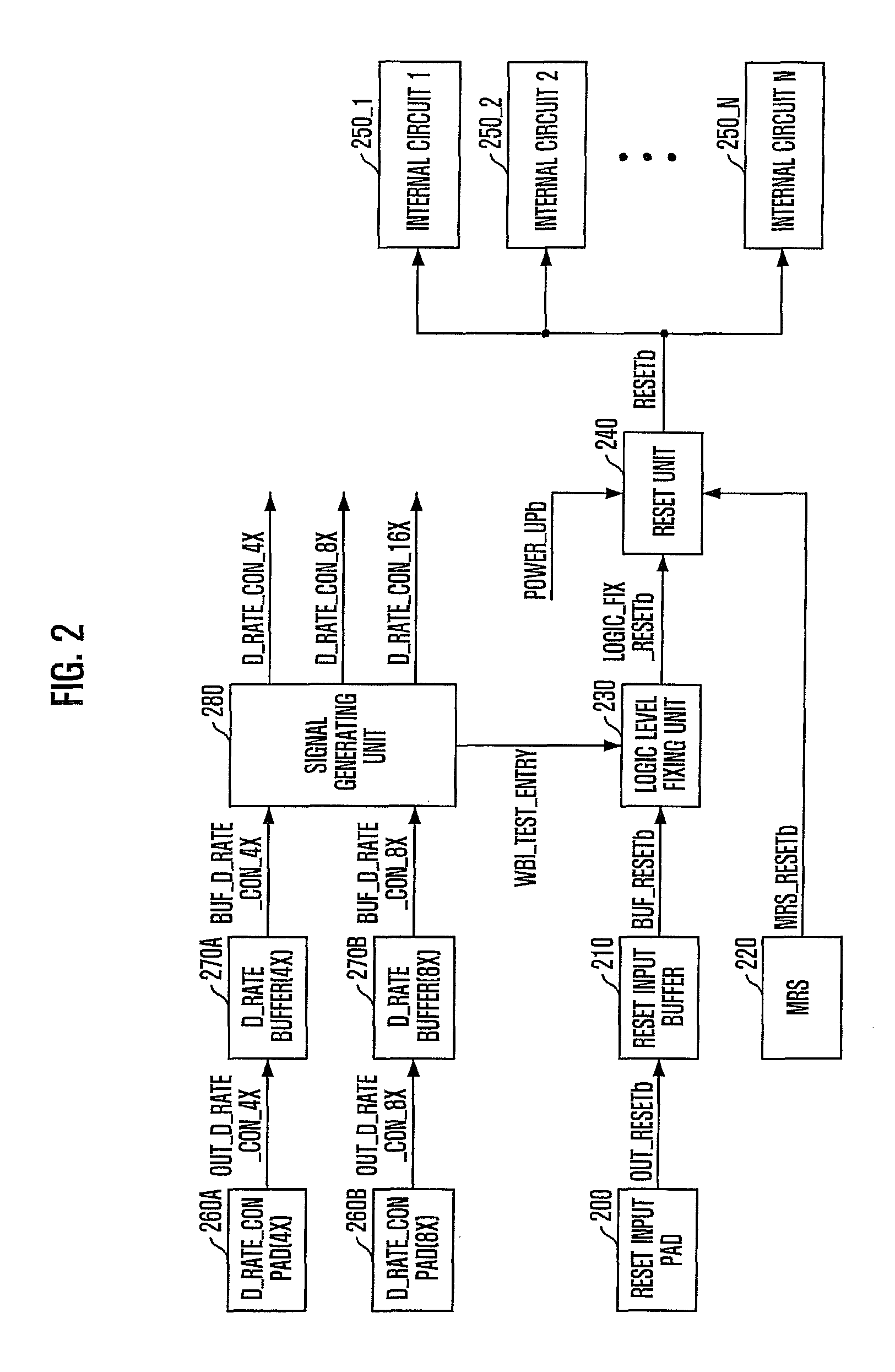Semiconductor device
a technology of semiconductor devices and devices, applied in the field of semiconductor device design technology, can solve the problems of abnormal operation of semiconductor devices, non-target values, and failure of semiconductor devices to normally perform objective operation
- Summary
- Abstract
- Description
- Claims
- Application Information
AI Technical Summary
Benefits of technology
Problems solved by technology
Method used
Image
Examples
first embodiment
[0039]FIG. 2 is a block diagram for explaining an operation of filtering a reset signal inputted from the outside through a reset input pad when a wafer burn-in test is performed in a semiconductor device in accordance with a first embodiment of the present invention.
[0040]As shown, the semiconductor device in accordance with the first embodiment of the present invention includes a signal generating unit 280, a logic level fixing unit 230, and a reset unit 240.
[0041]The signal generating unit 280 generates signals D_RATE_CON—4X, D_RATE_CON—8X and D_RATE_CON—16X for adjusting a data input / output bandwidth or for generating a test signal WBI_TEST_ENTRY for controlling an entry into a test mode in response to signals OUT_D_RATE_CON—4X and OUT_D_RATE_CON—8X inputted from the outside through predetermined first pads 260A and 260B.
[0042]The logic level fixing unit 230 fixes an external reset signal OUT_RESETb applied through a predetermined second pad 200, i.e., a reset input pad, to a pr...
second embodiment
[0076]FIG. 4 is a block diagram for explaining an operation of filtering an electric signal falsely inputted to an internally provided pad when a wafer burn-in test mode operation is performed in a semiconductor device in accordance with a second embodiment of the present invention.
[0077]As shown, the semiconductor device in accordance with the second embodiment of the present invention includes a plurality of input pads 400_1 to 400_N for receiving a plurality of external signals OUT_SIG_1 to OUT_SIG_N; a plurality of internal circuits 450_1 to 450_N for performing a predetermined internal operation in response to the external signals OUT_SIG_1 to OUT_SIG_N inputted through the plurality of input pads 400_1 to 400_N; and a signal transferring unit 430 for fixing the external signals OUT_SIG_1, OUT_SIG_3 and etc. inputted through predetermined input pads 400_1, 400_3 and etc. among the plurality of input pads 400_1 to 400_N at a predetermined logic level and transferring the fixed s...
PUM
 Login to View More
Login to View More Abstract
Description
Claims
Application Information
 Login to View More
Login to View More - R&D
- Intellectual Property
- Life Sciences
- Materials
- Tech Scout
- Unparalleled Data Quality
- Higher Quality Content
- 60% Fewer Hallucinations
Browse by: Latest US Patents, China's latest patents, Technical Efficacy Thesaurus, Application Domain, Technology Topic, Popular Technical Reports.
© 2025 PatSnap. All rights reserved.Legal|Privacy policy|Modern Slavery Act Transparency Statement|Sitemap|About US| Contact US: help@patsnap.com



